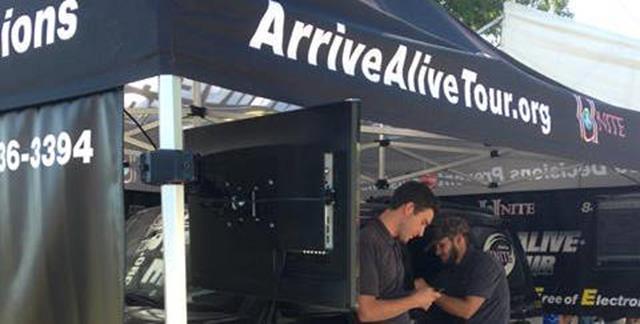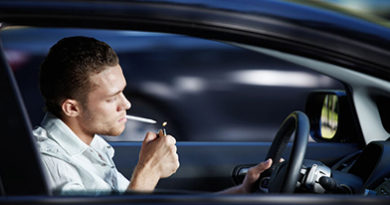Warnings To Texting Pedestrians To Help Keep Roads Safer?
At the Arrive Alive Tour, we often talk about the dangers of texting while driving and distracted driving. However, there is another danger on the roads and sidewalks, as texting pedestrians are being a danger to themselves! A new study at the University of Iowa takes a look at sending a warning sound to help prevent pedestrians from being struck by vehicles while texting.

Texting Pedestrians Study
The latest study was done in Human Factors and was titled, “Harnessing Vehicle-to-Pedestrian (V2P) Communication Technology: Sending Traffic Warnings to Texting Pedestrians.” The study was conducted by Pooya Rahimian and colleagues, as they simulated a busy roadway and had participants text while walking to cross busy intersections. When the crosswalk was unsafe to go through, a loud warning sound would be sent through their cell phone. This would warn them the crosswalk wasn’t safe and hopefully prevent pedestrians from getting hit.
The Results
For the texting pedestrians study, the researchers used more than 300 road-crossing trials in a 3-D immersive pedestrian simulator. They used 48 male and female participants. In the end, the warnings were somewhat effective in stopping the distraction from texting. The participants that received the warnings were more cautious than the participants that did not receive the warnings.
Some Concerns
While the results do show a positive sign for keeping pedestrians safer, Rahimian and colleagues were concerned with some of the other results. The participants that received the warning never reversed course once they entered the roadway. So, once they got started on something, they never stopped, despite the warning. This is apparently consistent with other research, as it shows the brain has trouble stopping actions once they are initiated. They also found that the texting pedestrians in the warning group also spent less time looking at traffic! Not good, as it seems they were relying more on the alerts than actually focusing on the roads.
The notes from the author stated, “Real-time information about when roads are safe or dangerous to cross could aid pedestrians in making good crossing decision. However, there are significant challenges in the development of sensor technology to reliably and accurately measure traffic conditions and movement initiation in time to prevent collisions.”
The possibilities are there for this new technology. However, like most new technology, there are issues and kinks to work out first. It’s all about improving the road safety for pedestrians and bikers!




You must log in to post a comment.